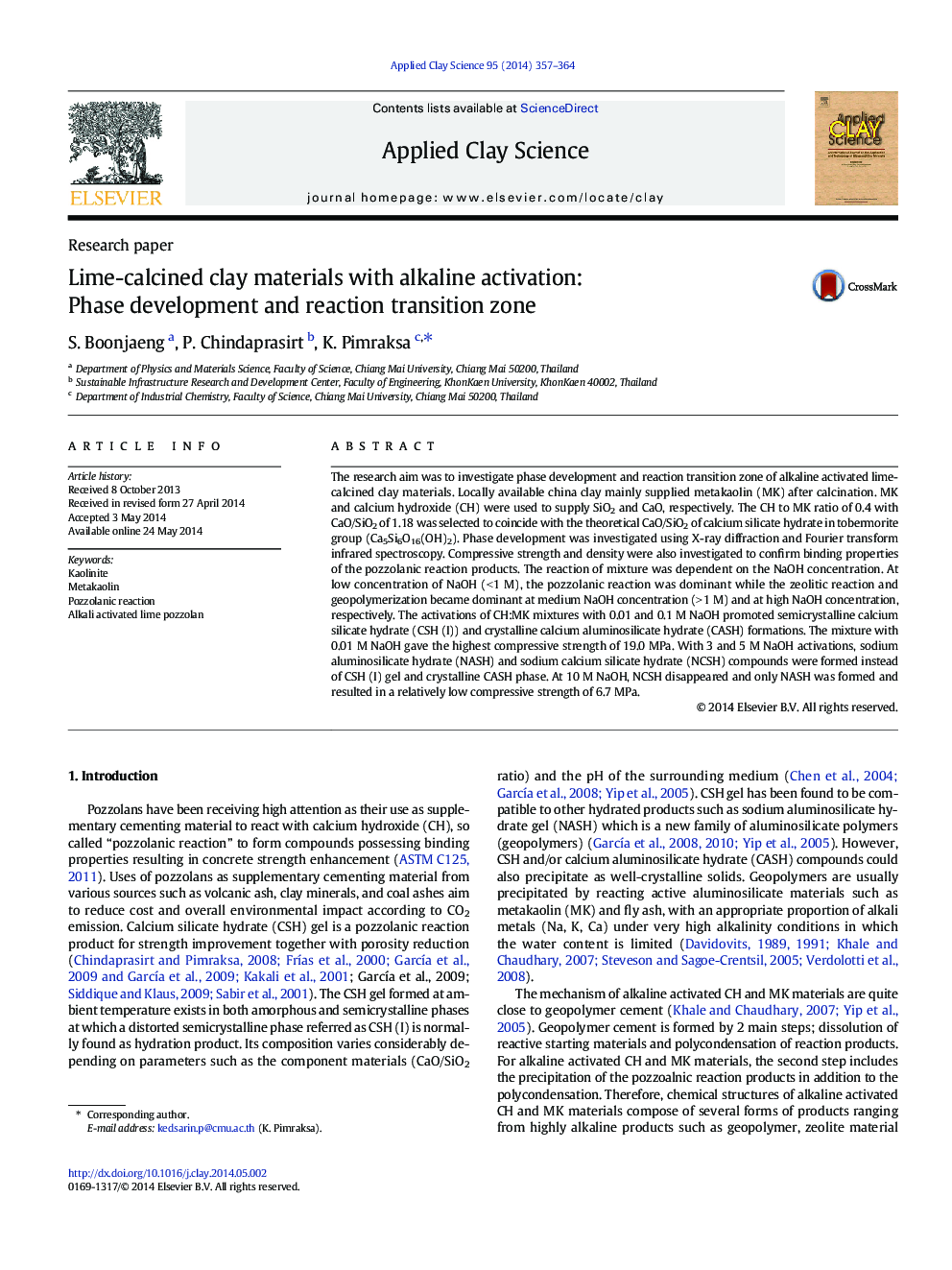| کد مقاله | کد نشریه | سال انتشار | مقاله انگلیسی | نسخه تمام متن |
|---|---|---|---|---|
| 1694828 | 1519082 | 2014 | 8 صفحه PDF | دانلود رایگان |
• We prepared alkaline activated lime-calcined clay materials.
• We proposed phase development of materials related to their mechanical properties.
• Pozzolanic reaction was changed to zeolitic reaction at medium NaOH concentration.
• Zeolitic reaction was changed to geopolymerization at high NaOH concentration.
• Pozzolanic reaction gave higher strength materials than other reactions.
The research aim was to investigate phase development and reaction transition zone of alkaline activated lime-calcined clay materials. Locally available china clay mainly supplied metakaolin (MK) after calcination. MK and calcium hydroxide (CH) were used to supply SiO2 and CaO, respectively. The CH to MK ratio of 0.4 with CaO/SiO2 of 1.18 was selected to coincide with the theoretical CaO/SiO2 of calcium silicate hydrate in tobermorite group (Ca5Si6O16(OH)2). Phase development was investigated using X-ray diffraction and Fourier transform infrared spectroscopy. Compressive strength and density were also investigated to confirm binding properties of the pozzolanic reaction products. The reaction of mixture was dependent on the NaOH concentration. At low concentration of NaOH (< 1 M), the pozzolanic reaction was dominant while the zeolitic reaction and geopolymerization became dominant at medium NaOH concentration (> 1 M) and at high NaOH concentration, respectively. The activations of CH:MK mixtures with 0.01 and 0.1 M NaOH promoted semicrystalline calcium silicate hydrate (CSH (I)) and crystalline calcium aluminosilicate hydrate (CASH) formations. The mixture with 0.01 M NaOH gave the highest compressive strength of 19.0 MPa. With 3 and 5 M NaOH activations, sodium aluminosilicate hydrate (NASH) and sodium calcium silicate hydrate (NCSH) compounds were formed instead of CSH (I) gel and crystalline CASH phase. At 10 M NaOH, NCSH disappeared and only NASH was formed and resulted in a relatively low compressive strength of 6.7 MPa.
Journal: Applied Clay Science - Volume 95, June 2014, Pages 357–364
